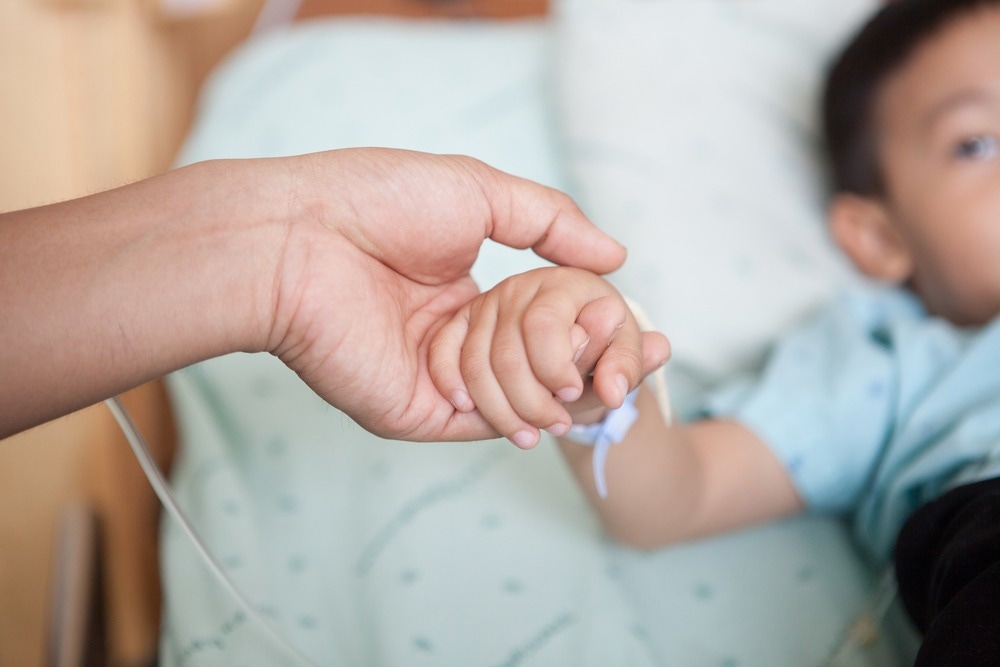In a new scientific paper published on the Research Square* preprint server, researchers described the case report of a five-month-old infant boy experiencing rebound multi-system inflammatory syndrome in children (MIS-C).

Study: Rebound multi-system inflammatory syndrome in children (MIS-C): A case report of an extremely rare phenomenon. Image Credit: hanongsukharakunno/Shutterstock.com

 *Important notice: Research Square publishes preliminary scientific reports that are not peer-reviewed and, therefore, should not be regarded as conclusive, guide clinical practice/health-related behavior, or treated as established information.
*Important notice: Research Square publishes preliminary scientific reports that are not peer-reviewed and, therefore, should not be regarded as conclusive, guide clinical practice/health-related behavior, or treated as established information.
Background
This child suffered from two episodes of MIS-C at a gap of 19 days. His second episode was far more severe, where he suffered an aneurysm in the right coronary artery. Thankfully, the physicians successfully treated both MIS-C episodes using standard therapy protocols.
The main characteristics of MIS-C are systemic hyperinflammation, persistent fever, and multi-organ frailty, all related to severe acute respiratory syndrome coronavirus 2 (SARS-CoV-2) infection.
Its rebound is rare; to date, merely two such cases have come into the limelight. Rebound disease varies from recurrence or relapses and implies that MIS-C re-occurred in this specific case within four to six weeks of ceasing the treatment or during the tapering of drugs.
Case presentation
During the first hospital admission, the boy had a persistent fever, alongside erythematous skin rashes, vomiting, and diarrhea. A reverse transcription-polymerase chain reaction (RT-PCR) test confirmed he had coronavirus disease 2019 (COVID-19) a month before.
The physical examination revealed tachycardia, tachypnea, and tenderness in the abdomen. Additionally, this boy had elevated C-reactive protein (CRP) levels and other inflammatory marker levels. An electrocardiogram (ECG) revealed a slightly dilated left ventricle, but his coronary arteries seemed normal.
After four days of treatment with methylprednisolone, IVIG, ceftriaxone, and aspirin, all MIS-C symptoms except the lung sounds resolved.
Six days of oral prednisolone therapy fully resolved his MIS-C manifestations, and the patient was discharged. He continued oral prednisolone at home for another nine days, a dosage of 0.5 mg/kg daily.
Precisely 19 days after hospital discharge, this boy again sought hospital admission. The doctors ordered an immunodeficiency workup considering the possibility of a rebound MIS-C, but it returned normal. However, an echo indicated an aneurysm in his right coronary artery. A blood workup showed hyperinflammation, and a chest X-ray showed pleural effusion.
Since this infant had a COVID-19 history, suffered from gastrointestinal (GI) symptoms, and his heart was impacted during the second MIS-C episode, the doctors rejected an alternative diagnosis of Kawasaki disease.
Based on the American College of Rheumatology clinical guidance, the doctors gave methylprednisolone at the dosage used during the initial treatment.
They also prescribed antibiotics due to the notion that he had also contracted pneumonia. After three days, they replaced it with oral prednisolone (same dosing schedule as before). Since the patient did not have COVID-19, they did not consider remdesivir therapy.
However, they considered interleukin-1 antagonists a substitute for remdesivir therapy, especially during the second MIS-C episode.
The patient became stable within eight days of treatment and was, thus, discharged from the hospital. During the 12-month follow-up, they performed two ECGs, which showed all his echocardiography parameters were normal.
Findings
Currently, MIS-C-related death rate is ~1.7%. Though most patients with cardiac issues recover, coronary artery aneurysms could persist in 20% of patients; however, in this case, it did not.
Moreover, MIS-C most frequently impacts the GI, cutaneous, and cardiovascular systems in up to 87%, 73%, and 100% of cases, respectively. Intriguingly, MIS-C in this boy involved all three organ systems.
Earlier, Pawar et al. had described a case report of another rebound MIS-C case, where an adolescent boy with Down syndrome presented with MIS-C symptoms. Similarly, the current case fits in the definition of an MIS-C rebound.
Though this child experienced a more severe second episode, he was free of MIS-C symptoms for 19 days between these two episodes.
In Kawasaki disease, the rebound is typically milder/incomplete and rare, occurring in barely ~0.1% of patients. However, the second episode of MIS-C was more severe, and future studies should study its pattern and characterize them.
Conclusion
To summarize, doctors successfully treated an atypical case of rebound MIS-C. This case report, however, highlights the need for close and long-term monitoring of similar cases. Perhaps a more aggressive treatment for a prolonged duration could prevent a rebound of MIS-C or related complications, as they tend to be more severe in MIS-C.
As more case reports come to the forefront, it would help guide clinical decision-making based on the considerations of moving biological agents kept aside for more obstinate & complex cases to the forefront as the first-line therapy.

 *Important notice: Research Square publishes preliminary scientific reports that are not peer-reviewed and, therefore, should not be regarded as conclusive, guide clinical practice/health-related behavior, or treated as established information.
*Important notice: Research Square publishes preliminary scientific reports that are not peer-reviewed and, therefore, should not be regarded as conclusive, guide clinical practice/health-related behavior, or treated as established information.